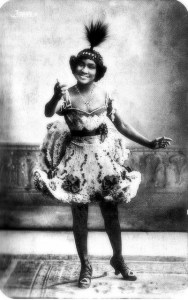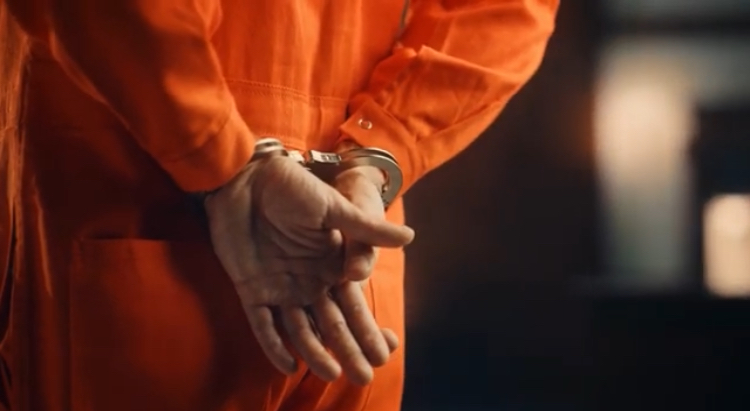[b.1883 – d.1983]
“I was picking up pennies dancing in front of the candy store when I was ten,” she recalled. “Before I started traveling, I was dancing all around the streets for money all the time, begging and hustling. Later on I danced for money. They asked me to dance, I said, ‘How much you goin’ give me?’ I was a real hustler!”
Ida’s first act on the road was at the Chicago World’s Fair in 1893. Ida, along with other child performers, traveled long distances, supporting themselves on the road with impromptu performances. In 1897 when Ida was fourteen, she hit the road performing in a tab show, which was a variety show of performers each with a specialty act, called The Black Bostonians. When the show went broke in Butte, Montana, Ida earned money singing on the train ride home. Ida’s mother gave her consent for her tours and Ida helped the family out financially with her earnings. “My mother was very understanding. She let me go on these tours. She was a maid, and my father had left her when I was two years old.”
Ida joined with Black Patti’s Troubadours in 1898 and stayed with them until 1903, touring San Francisco and New York. In 1903 Ida joined with another troupe, led by singer Abbie Mitchell, and went to Britain. Abbie Mitchell and Her Tennessee Students would tour Europe and Britain until the second decade of the century.
By 1907, she was touring her solo dance act throughout Russia and Austria. Bringing the Cakewalk with her from America, she soon incorporated Russian dances into her act and became known for her version of the Cossack dance. Settling in St. Petersburg Russia, Ida toured Europe for nine years.
“Everywhere I went I was lauded. I was paid good money and I had a ball. Everything I ever wanted I’ve had it,” she recalled. “I bought it with my good money in Europe … I enjoyed every minute.”
When Ida returned back to America, she could not find work. Also she was considered too dark for the Harlem nightclub circuit, which tended to feature lightskinned women. She explained, “When I got back from Europe I couldn’t get a job in any of the cabarets because I was too dark, I didn’t know how to shake and I never did anything vulgar,” she stated. “They used to boo if you did anything aesthetic.” Refusing to shimmy, to sexualize her performance style, Forsyne began work as a domestic.
She couldn’t go back to London due to the war and says “it was really hard to go from star status to nothing in a blink of an eye.”
By the early 1920s her career had stalled, although she toured with Sophie Tucker as her personal maid as well as part of her act. “I got $50 a week and did the maid part on and off stage. I was dressed in a black dress and white apron,” Ida recalled. And in1927 she toured in the chorus that accompanied Bessie Smith’s TOBA act.
She was also cast in several minor film roles including, A Daughter of the Congo in 1930 and Green Pastures in 1936. In 1951 she was an assistant choreographer for the New York City Ballet’s performance of The Cakewalk.
Little is known about her life after her theatrical career except that for a brief time she worked as an elevator operator in a hotel in upstate New York. She spent the remainder of her life at the Concord Baptist Nursing Home in Brooklyn, where she died August 19, 1983.
‘Babylon Girls: Black Women Performers and the Shaping of the Modern’ by Jayna Brown










Leave a comment